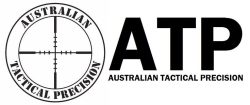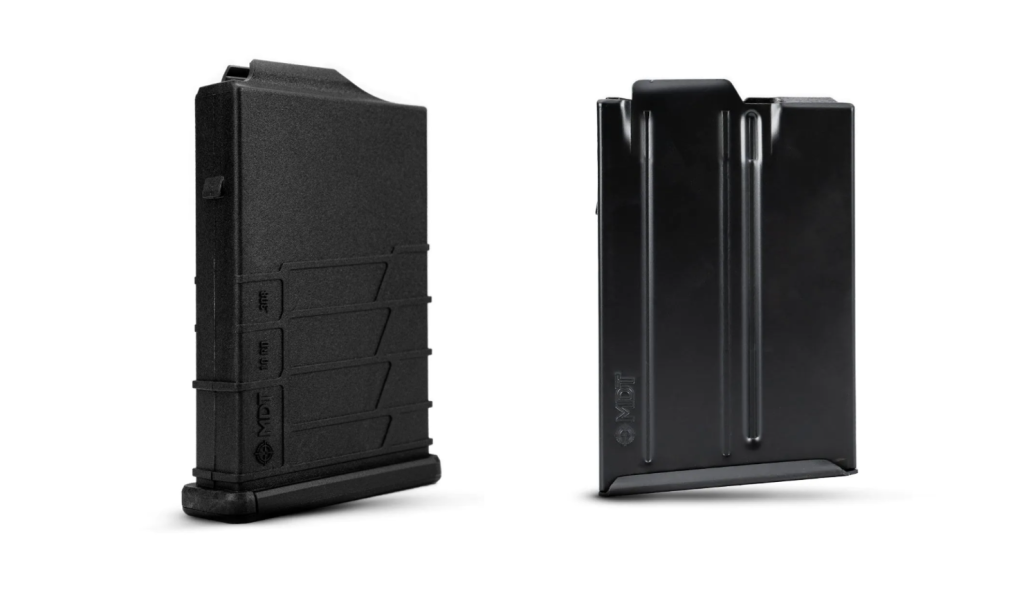For precision shooters and hunters alike, the AICS magazine system (Accuracy International Chassis System) has become the standard for detachable box magazines in bolt-action rifles. Widely adopted by chassis and stock manufacturers, AICS magazines are known for their reliability, compatibility, and consistent feeding.
But when it comes time to purchase, shooters often face a key choice: metal or polymer AICS magazines. Both have their strengths, drawbacks, and ideal applications. In this article, we’ll break down the differences so you can make an informed decision about which option suits your needs.
What Are AICS Magazines?
Originally developed by Accuracy International for their sniper rifles, AICS magazines are designed to provide smooth feeding and durability under demanding conditions. Over time, they’ve become the industry standard, with companies like Magpul and MDT producing their own versions.
While the design dimensions are standardized, materials differ—most commonly steel (metal), or polymer. This choice affects weight, durability, cost, and performance.
Metal AICS Magazines
Characteristics
Metal AICS magazines are typically made from stamped steel, sometimes finished with coatings such as Cerakote or Teflon to resist corrosion. They have been around longer than polymer versions and are often seen as the “traditional” choice.
Advantages
- Durability: Metal mags can withstand hard use, drops, and rough environments without deforming easily (with the exception of the feed lips if dropped on them).
- Heat Resistance: They perform consistently in extreme temperatures where polymers may become brittle or soften.
- Feed Lip Integrity: Metal feed lips hold their shape well over time, providing reliable and consistent feeding (unless the mag is dropped on the feed lips).
- Heritage & Proven Track Record: The military and professional marksmen have used metal AICS mags for decades, proving their reliability.
- Easy Feed Lip Modification: If you need to modify the feed lips to sort out feeding issues then this is easily done with steel magazines as you can bend the lips and bend them back in case you go to far with it.
Drawbacks
- Weight: Metal magazines are heavier, which can matter when carrying multiple mags or hiking long distances.
- Cost: Generally more expensive than polymer alternatives.
- Potential Denting: While strong, metal can dent if dropped on hard surfaces, potentially affecting feeding.
Polymer AICS Magazines
Characteristics
Polymer magazines, like the popular Magpul PMAG and MDT Polymer, are constructed from high-strength polymer blends engineered for impact resistance. They’ve become increasingly popular as manufacturing technology has improved.
Advantages
- Lightweight: Polymer magazines are noticeably lighter, making them ideal for field carry and extended hunts.
- Cost-Effective: Usually more affordable than metal versions, making them attractive for shooters who need multiple magazines.
- Impact Resistance: Unlike metal, polymer tends to flex rather than dent, often maintaining function after a drop.
- Corrosion Proof: Polymer doesn’t rust, making it low-maintenance.
Drawbacks
- Feed Lip Wear: Over time, polymer feed lips can wear down or spread, potentially leading to feeding issues.
- Temperature Sensitivity: In very hot or cold conditions, polymers may become brittle or soften. While modern materials are far better than early designs, extreme climates can still expose weaknesses.
- Less Rigid: Some shooters feel polymer lacks the solid, precise fit of metal magazines.
- Difficult Feed Lip Modification: If you need to modify the feed lips to sort out feeding issues then this can only be done by sanding or filing them. If you go to far with the modification then you cannot put material back on so can make the magazines unusable if care is not taken.
Performance in the Field
Both metal and polymer AICS magazines perform well, but the environment and use case make a big difference:
- Precision Rifle Competition (PRS/NLR): Shooters often favor polymer for weight savings, lower cost, and the ability to carry more mags without bulk. Magpul’s polymer AICS magazines are very popular here.
- Hunting: Polymer is excellent for hunters who hike long distances or hunt in wet conditions, thanks to its lighter weight and resistance to rust.
- Military/Professional Use: Metal still dominates due to its ruggedness, consistency, and proven reliability in harsh conditions. For extreme climates and extended deployments, steel mags tend to hold up better.
- Long-Term Storage: Metal magazines generally retain feed lip shape better over time, while polymer mags should be checked periodically for wear.
Which is Best
The answer depends on your application:
- Choose Metal if:
- You need maximum durability in rough environments.
- You’re operating in extreme heat or cold.
- You prioritize long-term reliability and don’t mind extra weight.
- Choose Polymer if:
- You want lightweight, affordable magazines.
- You’re primarily hunting or competing where carrying multiple mags matters.
- You need corrosion resistance in wet or humid conditions.
Many shooters own both—metal magazines for critical or rugged use, and polymer magazines for training, hunting, or competition where cost and weight matter more.
Metal vs Polymer AICS Magazines: Quick Comparison
| Feature | Metal AICS Magazines | Polymer AICS Magazines |
|---|---|---|
| Material | Steel (often coated for corrosion resistance) | High-strength polymer blends |
| Weight | Heavier | Lightweight |
| Durability | Extremely rugged, resists wear, proven in harsh use | Impact-resistant, flexes instead of denting |
| Feed Lips | Hold shape well, long-term reliability | Can wear or spread over time |
| Temperature Performance | Excellent in extreme heat or cold | May soften in heat or become brittle in cold |
| Corrosion Resistance | Can rust if coating is damaged | Rust-proof |
| Cost | Generally more expensive | More affordable |
| Best Use Cases | Military, professional, or extreme conditions | Hunting, competitions, training, everyday use |
Final Thoughts
Both metal and polymer AICS magazines are highly capable and reliable options. Metal offers the edge in extreme durability and longevity, while polymer provides excellent value, weight savings, and corrosion resistance.
Instead of asking which is objectively “better,” it’s worth asking: Which is better for your style of shooting? If you’re trekking miles into the bush or running a match with multiple reloads, polymer may be your best bet. If you need a bomb-proof magazine that can handle any conditions, metal is hard to beat.
In the end, both have their place, and the versatility of the AICS standard means you can choose either—or both—depending on the mission at hand.

